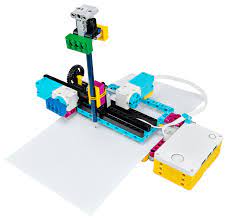Atomic Masses Of First 30 Elements Of The Periodic Table

The atomic mass of an element was first determined by John Dalton and Thomas Thomson. However, the discovery of elements did not end with them, and several great scientists embarked on the mission to uncover all the elements found in the world and arranged them in the form of periodic tables.
Atomic mass is the mass of an atom of any given element and is denoted by amu or atomic mass units. Atomic mass is also referred to as molecular weight or atomic weight. Moreover, atomic mass can also be understood as the combination of the total number of protons and neutrons in an element.
Definition Of Atomic Mass Of Element
The atomic mass of any element is also the total mass or weight of one atom of that particular element. Atomic mass is measured in the atomic mass unit (amu) and is often denoted as u.
And each unit of atomic mass is defined as “ 1/12 of the mass of a carbon-12 atom in its ground state”. Several definitions of atomic mass were being used before, but this one is the most accurate one.
It is often called relative isotopic mass because every element is different, and thus, the atomic mass is used to donate the average of the masses of all these isotopes. In the periodic table, the atomic masses of every element is determined by their natural isotopes. Carbon 12 nuclide has been used as a standard value to measure the masses of all other elements.
List Of First 30 Elements
The weight of an individual atom is very small and can only be measured by the mass spectrometer. The mass of the atom of the element gets affected due to the interaction of particles in the nucleus.
Earlier, elements in the periodic table were arranged in the order of increasing atomic mass. But later, scientists cleared that it was not the atomic mass, which determines the properties of different elements. Still, it is the atomic number that affects the properties of every element. Thus, the elements should be arranged in order of atomic number.
Following is the list of all the elements sorted by atomic mass in the order of their atomic number from 1 to 30, with their properties, symbol and atomic number.
| Symbol | Atomic number | Name of the element | Atomic mass (amu, g/mol) | Physical properties |
| H | 1 | Hydrogen | 1.0079 | Colourless, odourless and has low density. |
| He | 2 | Helium | 4.0026 | It is an Inert gas and has the lowest boiling and melting point. |
| Li | 3 | Lithium | 6.941 | Lithium has low density and viscosity |
| Be | 4 | Beryllium | 9.0121 | Excellent thermal conductivity and can resist oxidation |
| B | 5 | Boron | 10.8 | Poor conductor of electricity |
| C | 6 | Carbon | 12.01 | Carbon can form a long chain of atoms |
| N | 7 | Nitrogen | 14.006 | Colourless and odourless |
| 0 | 8 | Oxygen | 15.999 | Colourless, odourless and is paramagnetic |
| F | 9 | Fluorine | 18.9984 | Burns with a bright flame when combined with water. |
| Ne | 10 | Neon | 20.179 | Gives out reddish-orange light when current is passed through it |
| Na | 11 | Sodium | 22.989 | Highly Reactive and soft |
| Mg | 12 | Magnesium | 24.30 | Burns with glare, hence used in crackers |
| Al | 13 | Aluminium | 26.981 | Light and highly malleable |
| Si | 14 | Silicon | 28.08 | Purely electropositive and brittle |
| P | 15 | Phosphorous | 30.973 | Exists in different allotropic forms – white, black, and red |
| S | 16 | Sulphur | 32.06 | Produces a blue flame and strange odour when burnt |
| Cl | 17 | Chlorine | 35.45 | Gives out a suffocating smell and is greenish-yellow in colour |
| Ar | 18 | Argon | 39.94 | Odourless, colourless and inert gas |
| K | 19 | Potassium | 39.098 | Soft and can float on water |
| Ca | 20 | Calcium | 40.08 | Soft metal, which turns greyish when left in sunlight. |
| Sc | 21 | Scandium | 44.9 | Has a soft texture and burns easily in the air |
| Ti | 22 | Titanium | 47.90 | Exhibits metallic lustre and ductility |
| V | 23 | Vanadium | 50.94 | Resistant to oxidation |
| Cr | 24 | Chromium | 51.99 | Chromium has a high melting point and has a crystalline structure |
| Mn | 25 | Manganese | 54.93 | Burns in oxygen and can dissolve in dilute acids |
| Fe | 26 | Iron | 55.84 | Gets rusted in the presence of water and oxygen |
| Co | 27 | Cobalt | 58.93 | Lustrous and brittle |
| Ni | 28 | Nickel | 58.70 | Good conductor of heat and electricity |
| Cu | 29 | Copper | 63.54 | Copper is amorphous in its solid state and a good conductor of electricity. |
| Zn | 30 | Zinc | 65.38 | Zinc is a very sparkly, whitish-blue metal |
How To Calculate The Atomic Mass
The proton and neutron present in an atom determine the mass of an atom. So if you do not know how to calculate the atomic mass of an atom in any element, follow the following steps.
- Find out the total number of neutrons and protons in that single atom. To find the number of protons, look for the atomic number of the element.
- Now add the number of protons to the number of neutrons present in that specific isotope to get its mass number.
However, many students often get confused between atomic and mass numbers. So, here is a brief comparison of atomic and mass numbers.
Comparison Of Atomic Number and Atomic Mass
| Atomic Mass | Atomic Number |
| It is the sum of protons and neutrons in an atom. | Atomic number signifies the number of proton in an atom |
| It is denoted by A | Atomic number is denoted by Z |
| Atomic Mass is measured in terms of AMU ( atomic mass unit) | It is a number used to arrange the elements in a periodic table and hence are not measurable. |
| Atomic mass cannot be used for the identification of elements | Atomic number helps in arranging and grouping elements with similar nature. |
Final Remarks
Atomic mass is the sum of protons and neutrons present in an element. It is denoted by u, which is a symbol of atomic mass unit. According to the standard convention, 1 amu is equivalent to 1/12 the mass of one carbon atom in its ground state. The list above of atomic numbers clearly shows how the difference in atomic number and mass number gives distinct properties to each element.





